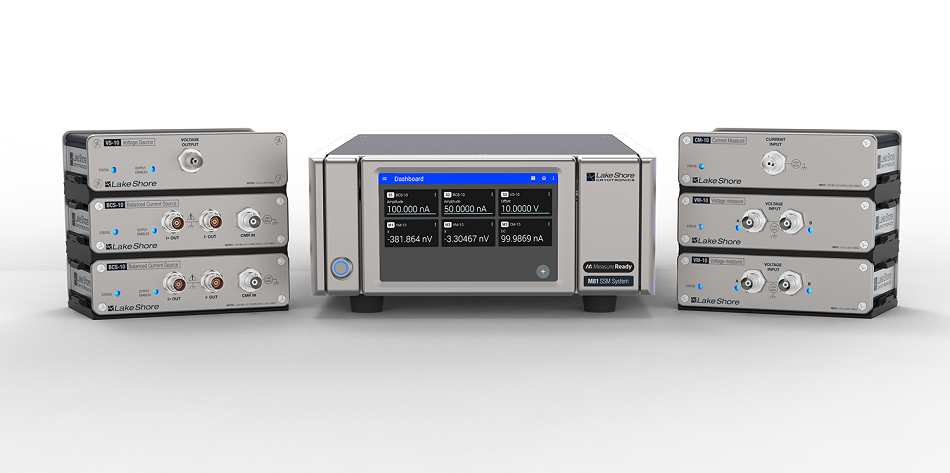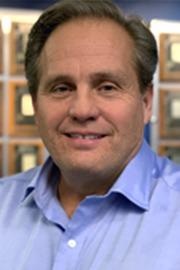In this interview, AZoM speaks to Chuck Cimino, Senior Product Manager at Lake Shore Cryotronics, about the benefits of their M81 Synchronous Source Measure System.
Can you give a brief overview of Lake Shore Cryotronics, the markets you serve, and the types of products you produce?
Lake Shore Cryotronics is an Ohio-based company that provides measurement and control solutions for low-temperature and magnetic field conditions.
We offer sensors and instruments for cryogenic research and thermometry applications, as well as material characterization systems and instruments for measuring electrical, magnetic, thermal, and optical properties of materials during early-stage device research.
In 2020, we acquired the lab cryogenics business of Janis Research, which means we now also offer Janis brand cryostats, cryocoolers, superconducting magnet systems, cryogenic probe stations, and many other standard and custom-engineered cryogenic lab solutions.
Our customers include researchers at university, government, aerospace, and commercial research institutions worldwide. Most users are physicists, materials scientists, or electrical engineers, particularly those working at the early stage of new technology development.
Could you please explain the basic theory of the M81 Synchronous Source Measure System?
The M81-SSM is a new concept for low-level electrical characterization of materials and devices requiring ultra-low power signals to be sourced and measured using DC, AC, and lock-in detection methods and low-noise optimized characterization instrumentation.
The M81-SSM utilizes a central DSP master clocking architecture we call MeasureSync™. This technology enables and ensures precise timing alignment and synchronization regardless of the number of source and measure channels attached to a single M81 instrument.
In addition, this unique architecture allows each source and measure amplifier module to be physically co-located as near as possible to the device under test to further minimize noise pickup from ambient, thermal, ground loop, and other common interference sources.
How is the M81 Synchronous Source Measure System designed to assist the user?
The M81-SSM is designed around a touchscreen-based instrument platform we call MeasureReady™ that provides the user with a modern, easy-to-learn, intuitive interface for controlling up to 6 channels — up to 3 sources, up to 6 measures — that all share the same timing and amplitude references.
This greatly simplifies configuration and measurement acquisition on a per-channel basis for DC, AC, or lock-in detection.

Also, by eliminating the typical multi-box test setups common in research and other demanding measurement applications, the M81-SSM presents users with a single on-screen and remote programming interface.
This single UI removes the chore of learning and managing different interfaces of mixed-era, mixed-vendor, 'rack-and-stack' multi-instrument setups.
What is unique about the M81-SSM’s real-time architecture?
The MeasureSync™ technology noted earlier is, in part, what helps make the architecture unique. The technology drives the real-time sampling of all the precision DAC and ADC channels across the system.
This ensures tightly aligned updates of sources and inherent time and channel synchronization across all measure channels, regardless of signal types for frequencies up to 100 kHz.
In addition, this high-speed sampling system is completely contained within the instrument, and the remotely locatable source and measure amplifier modules operate normally in purely analog modes and use low-noise power supplies that greatly reduce digital noise signals from being coupled into sensitive, low-level measurement signals and devices under test.
Can the M81-SSM make scientific-grade low-level measurements?
Yes, the M81-SSM is optimized explicitly for ultra-low-level sourcing and measurement applications. It does this by leveraging Lake Shore’s decades of experience with cryogenic temperature sensors and instruments that are optimized to minimize signal levels to avoid self-heating while ensuring maximum accuracy and sensitivity.
For example, the M81-SSM includes a differential or balanced current source module (our BCS-10 module) with CMR rejection circuitry, that when used in combination with the VM-10 voltmeter module and set to differential mode, greatly improves rejection of ground and common line noise interference signals for cryostat, cryogenic probe station, and other ultra-low-level device setups.
Multiple VM-10 modules can be used with one to three BCS-10 sources for multi-harmonic detection measurements, with no additional external equipment required.
What other features does the M81-SSM have that make it superior to any other products on the market?
One of the most notable features is the seamless measure ranging on the VM-10 module. It reduces or eliminates the typical time and amplitude discontinuities encountered between adjacent range/gain changes for sweeping type applications covering many decades of signal level.
Additionally, there are dual DAC source range/amplitude settings for independent control of DC and AC source voltages using the VS-10 module, due to it having completely separate range and amplitude hardware for DC and AC signals.
This enables, for example, small AC signals to be simultaneously mixed with a larger or time-varying DC signal of significantly different magnitude while preserving full-settable resolution for each signal, regardless of relative magnitude.
It also eliminates the need for external signal-mixing resistor networks that add complexity and accuracy errors and can increase noise.
Plus, the VM-10 voltage measurement module includes features normally not included in typical lock-in amplifiers, such as built-in low- and high-pass analog filters with user-selectable corner and response settings. These can be used to reduce out-of-band signals before they saturate front-end signal amplifiers, reducing or eliminating the need for external preamplifiers.
In addition, there is measure autoranging, which operates in DC, AC, and lock-in measurement modes and automates the range selection and signal tracking for applications spanning many decades of voltage or current response, greatly reducing the need for user intervention.
Common lock-in amplifiers and associated preamplifiers are typically manually operated in terms of gain/range settings, which takes additional time and may require someone to monitor or adjust settings during experiments. The M81-SSM automatically detects and decides the most appropriate range selections for best accuracy performance when in autorange mode, but fully manual ranging is also available when desirable.
Are there any additional benefits to working with Lake Shore Cryotronics?
We have many experienced application scientists on staff to assist you with equipment selection, setup, and operation for the best possible performance and reproducible results.
This includes expertise spanning cryogenic temperature and high magnetic field sample environments, whether it’s a Lake Shore or Janis brand solution or a hybrid one including measurement solutions such as the M81-SSM, our M91 FastHall™ controller, or others.
We are also one of only a few cryogenic equipment suppliers that offer turnkey, solution-level MeasureLINK™ software that automates Lake Shore and Janis's low-temperature, high-field systems and now also supports the M81-SSM and other electrical measuring instruments without any of the line-by-line programming required for many applications.
What’s next for Lake Shore Cryotronics?
The M81-SSM platform will be continuously enhanced and expanded through additional remote measurement modules to cover more signal types and applications when used in combination with (and separate from) our advanced cryogenic and high-field environment systems.
Additional capabilities will also be added through firmware updates, including for M81-SSMs in the field, to expand and enhance measurement functions, useful derivations, and user-defined calculations as emerging applications require such enhancements.
Similarly, MeasureLINK software capabilities will continue to evolve to support the M81-SSM and our user base’s demanding electrical measurement needs, especially when combined with Lake Shore and Janis cryogenic and magnetic platforms, with no programming required for many applications.
In addition, we have established close collaborations with leading university labs to aid us in the ongoing development and refinement of our systems and software capabilities for future measurement requirements.
Lake Shore’s mission is “Advancing Science,” which we will continue to enable by, among many other things, keeping our material characterization systems up to date and able to address all possible emergent electrical applications of the worldwide research community.
About Chuck Cimino
 Chuck Cimino has more than 35 years of experience in the global test and measurement industry. Before joining Lake Shore Cryotronics in 2018, he held various leadership roles at Keithley Instruments, including Senior Marketing Director of Semiconductor I-V Instruments. As a Senior Product Manager for Lake Shore, Chuck manages product marketing for the company’s line of MeasureReady™ test and measurement instruments, Hall effect measurement systems and instruments, vibrating sample magnetometers, and various other products designed for low-level material research.
Chuck Cimino has more than 35 years of experience in the global test and measurement industry. Before joining Lake Shore Cryotronics in 2018, he held various leadership roles at Keithley Instruments, including Senior Marketing Director of Semiconductor I-V Instruments. As a Senior Product Manager for Lake Shore, Chuck manages product marketing for the company’s line of MeasureReady™ test and measurement instruments, Hall effect measurement systems and instruments, vibrating sample magnetometers, and various other products designed for low-level material research.
Chuck’s undergraduate degree is in Applied Electrical Engineering, and he has an MBA from Case Western Reserve University with a concentration on leadership, finance, and entrepreneurialism.
Disclaimer: The views expressed here are those of the interviewee and do not necessarily represent the views of AZoM.com Limited (T/A) AZoNetwork, the owner and operator of this website. This disclaimer forms part of the Terms and Conditions of use of this website.